5 Stem Cards That Make Math Learning Exciting for Students
Zeba ParkarShare
As a parent and educator I’ve always looked for tools to make learning more fun, especially with Math. Many children struggle with abstract concepts, equations and problem solving and Math can feel daunting. Traditional teaching methods are effective but sometimes feel overwhelming and lead to frustration and a lack of confidence.
That’s why adding STEM challenge cards to learning can be a game changer. These hands on STEM activity cards turn Math into a interactive experience by breaking down complex concepts into smaller, more manageable challenges. Instead of relying on worksheets or textbooks STEM challenge cards engage students in problem solving, critical thinking and creativity – essential STEM skills that go beyond the classroom.
Why Choose STEM Challenge Cards for Math Learning?
A Hands-On Approach to STEM Learning
One of the best things about STEM challenge cards is they’re a hands on activity. Unlike traditional math lessons that are all about rote memorization, these STEM activity cards let students engage with math concepts through problem solving and experimentation.
For example a challenge like designing pool floatation devices gets students applying mathematical and scientific principles in a real world context. Or creating pumpkin catapults or making elf zip lines turns math into a fun challenge that builds creativity and engineering skills.
By including these fun in their daily learning students develop a more positive attitude to math – one that builds confidence and enthusiasm.
Encouraging Critical Thinking and Problem-Solving
Math is also about logical thinking and problem solving, not just numbers. Challenge cards from STEM encourage students to examine patterns, experiment with ideas, and produce creative answers. Students acquire STEM abilities including logical thinking, spatial awareness, and critical analysis rather than just rote learning equations.
Activities end of class wherein someone can choose a challenge card and work on a problem independently can reinforce concepts in young learners. These projects inspire kids to get creative with mathematics in a stimulating and hands on way, whether they are creating pool floatation gadgets or solving a geometry problem.
5 STEM Cards That Make Math Learning Exciting for Students
Not all STEM activity cards are identical. Several choices I have tried have these five sets standout for their interactive elements, straightforward explanations, and capacity to simplify difficult ideas. Math is an interesting venue to develop abilities and confidence thanks to these learning materials.
Here are five STEM flashcards that stand out due to their focused learning approach, making math not just understandable but exciting.
1. Writer Macy Flashcards – Geometry and Patterns (Age 9+)
If your child struggles with geometry and pattern recognition, the Writer Macy Flashcards are a great tool. These STEM activity cards break down complex shapes and symmetry into simple, engaging problems.
Each card presents a visual challenge on one side, while the other side provides hints, explanations, and solutions. This method encourages critical thinking and problem-solving, which are essential for math mastery. By engaging with different patterns, students enhance STEM learning by recognizing sequences, symmetry, and geometric relationships.
Additionally, these challenge cards are designed to reduce math anxiety. Since the answers are explained in a child-friendly text, students feel more confident in their reasoning and problem-solving abilities. Whole-class instruction, small group learning, or independent practice—these flashcards work in multiple settings, making them a versatile classroom and home learning tool.
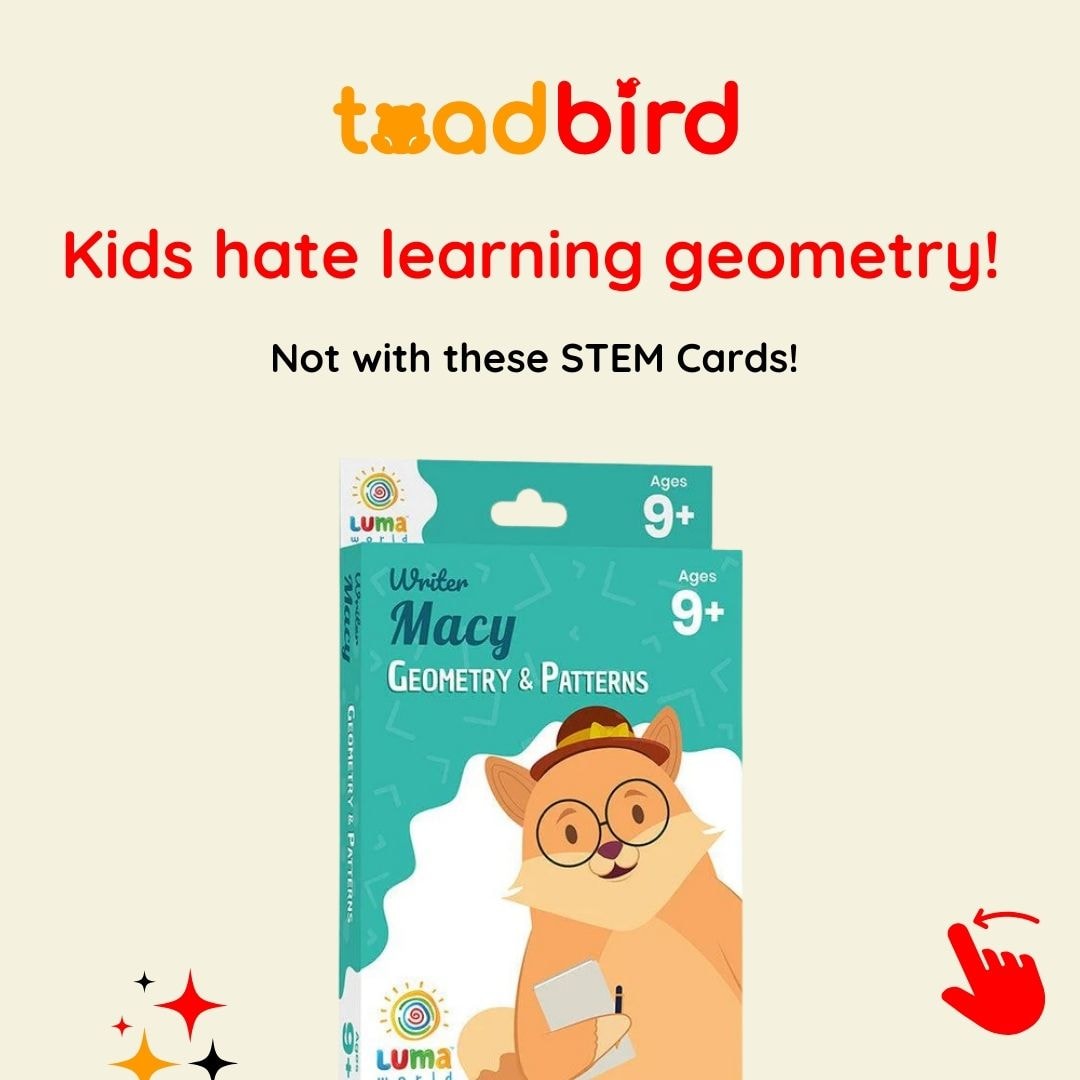
Why These Flashcards Are Great for Learning Geometry
- Visual learning approach: Helps kids recognize patterns and shapes in a fun way.
- Interactive problem-solving: One side presents a challenge, and the other provides explanations and solutions.
- Encourages critical thinking: Builds spatial awareness and logical reasoning skills.
- Versatile use: Ideal for independent learning, group activities, or classroom instruction.
These cards simplify symmetry, sequences, and geometric concepts, making them easy to grasp for young learners.
2. Scientist Paula Flashcards – Fractions (Age 8+)
Fractions are one of the most challenging math concepts for young learners. The Scientist Paula Flashcards make fractions less intimidating by using common materials and real-world applications to teach concepts like halves, thirds, and quarters.
Unlike traditional textbooks, these cards provide visual learning, which helps students see how fractions work in everyday scenarios. The hands-on approach ensures that children don’t just memorize fractions but truly understand them. Whether students are cutting a pizza, dividing a chocolate bar, or sharing toys, they can relate these activities to the fraction problems in the cards.
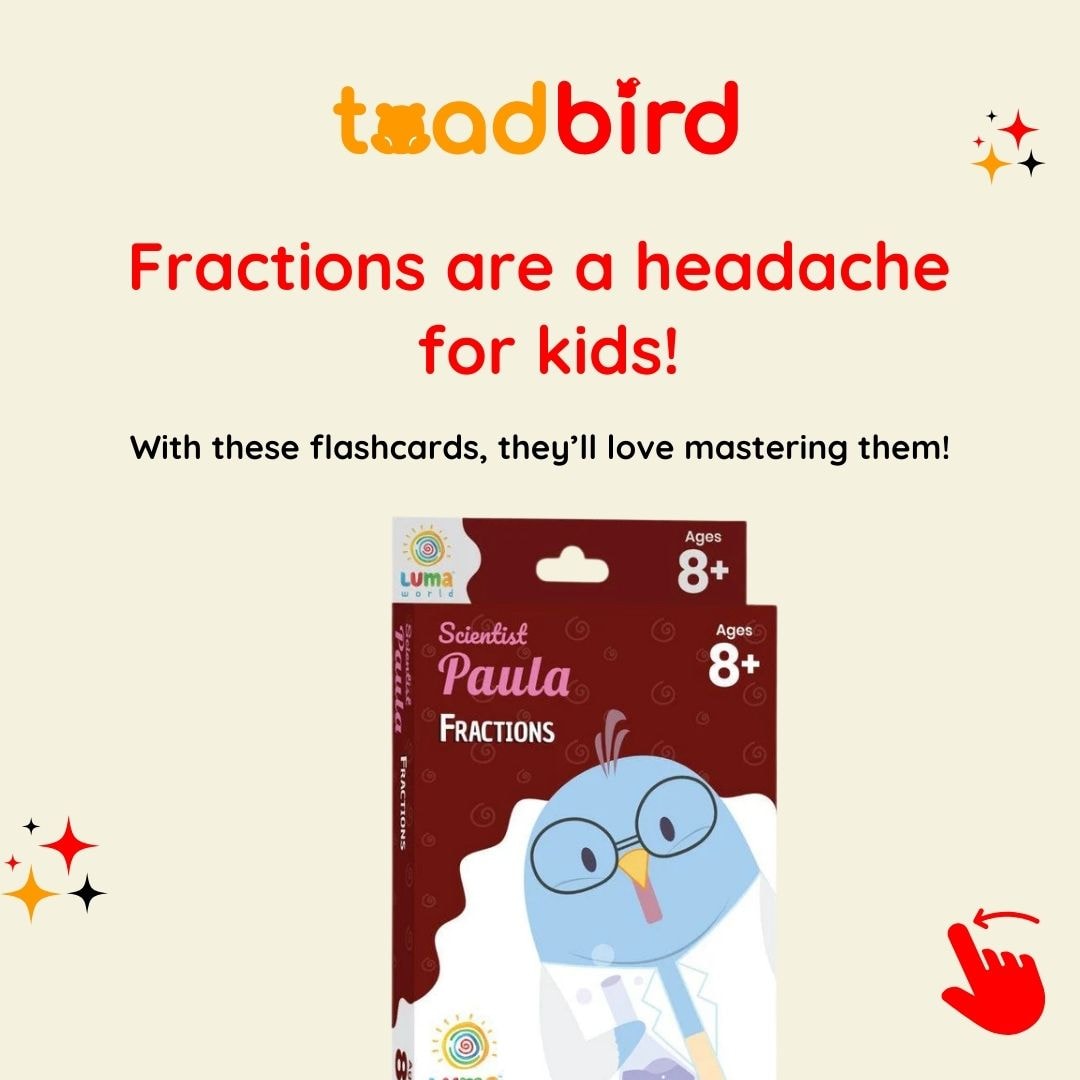
Why These Flashcards Make Fractions Easy
- Uses real-life examples: Helps kids understand fractions through everyday activities (e.g., sharing food, measuring ingredients).
- Visual and hands-on approach: Instead of just memorizing fractions, students see and apply them.
- Interactive challenge: Features a Magic Glass™ viewer to reveal answers, making it feel like a math treasure hunt.
- Supports different learning styles: Works well for whole-class activities, small groups, or solo practice.
If your child finds fractions confusing, these cards turn them into an exciting and understandable math concept.
3. Professor Henry Flashcards – Measurements (Age 8+)
Understanding measurements is a fundamental math skill that extends far beyond the classroom. The Professor Henry Flashcards introduce concepts like length, weight, and volume through real-world problem-solving challenges.
For example, one card might ask students to compare the weight of two objects using common household materials, while another might challenge them to measure distances accurately. These tasks help children grasp units of measurement in an engaging way, instead of just memorizing formulas.
The cards are ideal for early finishers, whole-class instruction, or independent learners who need extra practice.
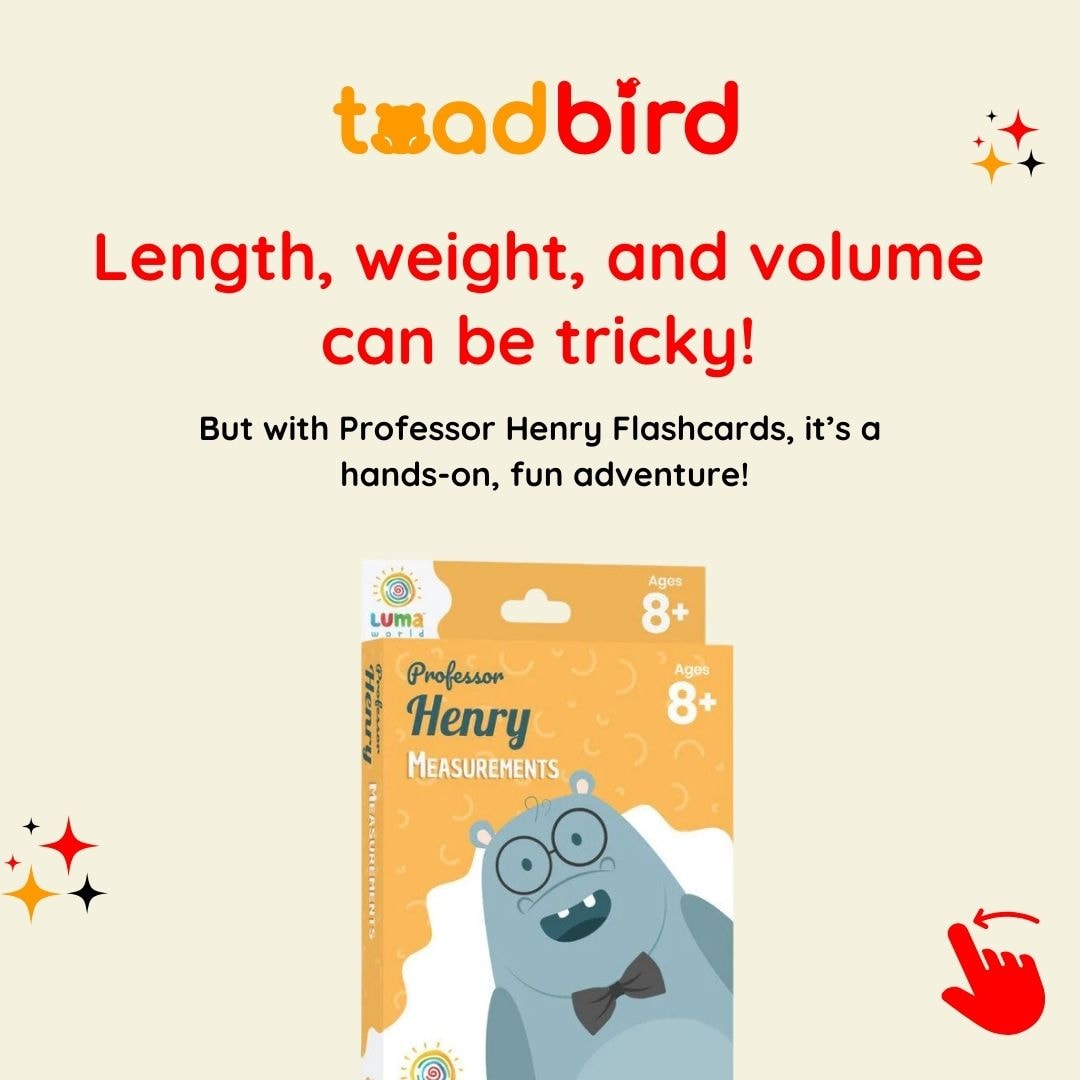
How These Flashcards Help with Measurement Skills
- Covers key concepts: Focuses on length, weight, and volume, helping kids relate them to real-world situations.
- Hands-on practice: Encourages kids to measure objects around them, making the topic more practical.
- Encourages problem-solving: Challenges students to think logically about units and conversions.
- Adaptable learning: Can be used for classroom instruction, extra practice, or independent study.
These flashcards make measurement engaging by using STEM-based challenges that help students apply concepts in everyday life.
4. Officer Teddy Flashcards – Geometry and Patterns (Age 8+)
For younger students just beginning their geometry journey, the Officer Teddy Flashcards provide a structured introduction to key concepts like symmetry, angles, and shapes.
The key benefit of these cards is that they encourage visual learning. Geometry is best understood when students can see and manipulate the shapes rather than just reading about them. With these STEM activity cards, students practice identifying different geometric patterns and applying their knowledge to real-world challenges.
Another standout feature is the focus on spatial awareness. Many children struggle with understanding how different shapes relate to each other, especially in STEM fields like engineering and design. By using these challenge cards, kids strengthen their problem-solving skills and logical thinking, which are essential for math success.
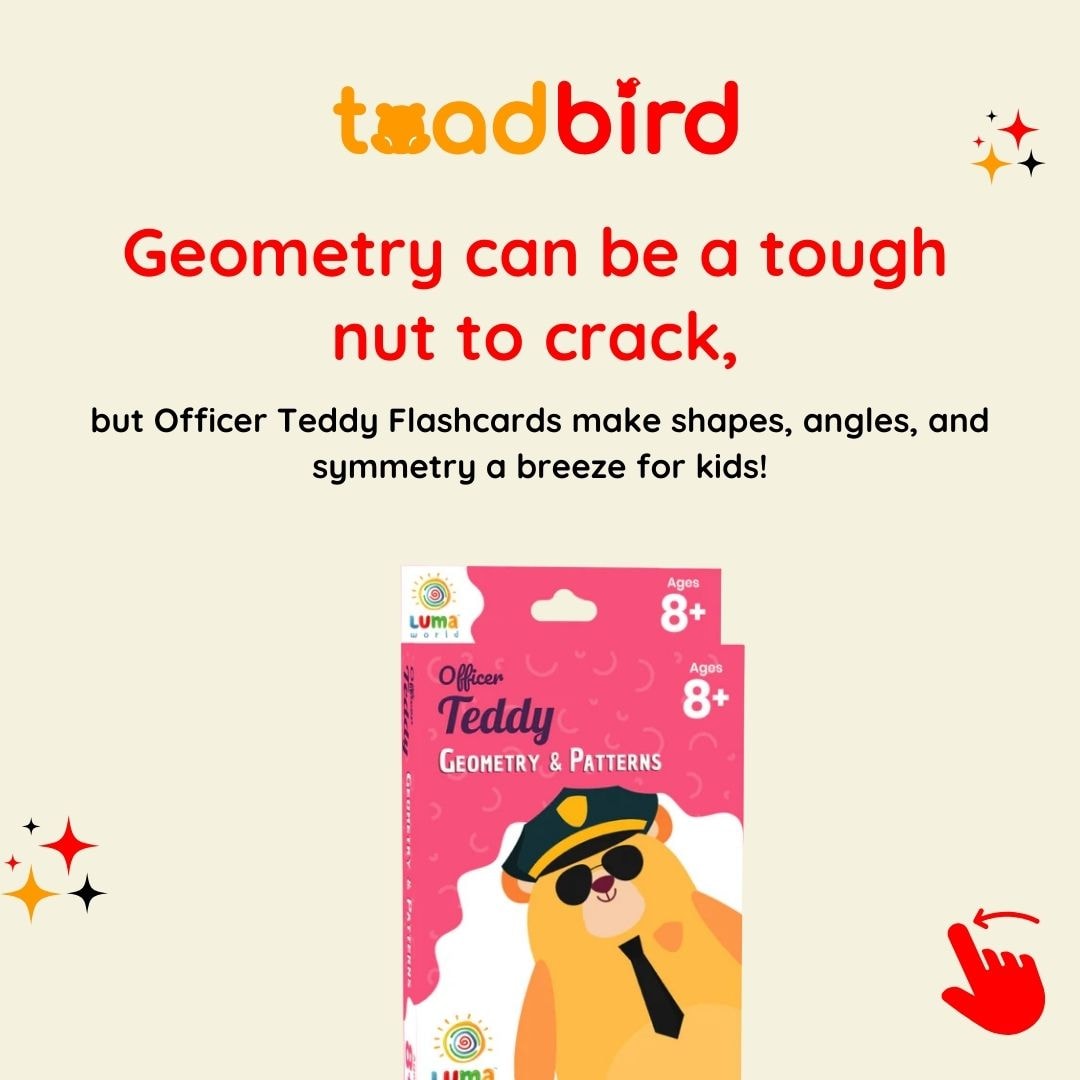
How These Flashcards Build Spatial Awareness
- Introduces basic geometry: Covers angles, symmetry, and shapes in a kid-friendly way.
- Boosts visual reasoning: Helps children recognize patterns and geometric relationships.
- Encourages interactive learning: Keeps students engaged with STEM-based challenges.
- Works for different learners: Can be used in classrooms, at home, or in small groups.
These flashcards provide a strong foundation in geometry, preparing kids for more advanced math later on.
5. Major Duke Flashcards – Geometry and Patterns (Age 10+)
For older students, these flashcards offer a more advanced look at geometry, covering 3D shapes, coordinate planes, and transformations. The step-by-step approach makes complex topics completed independently without feeling overwhelming.
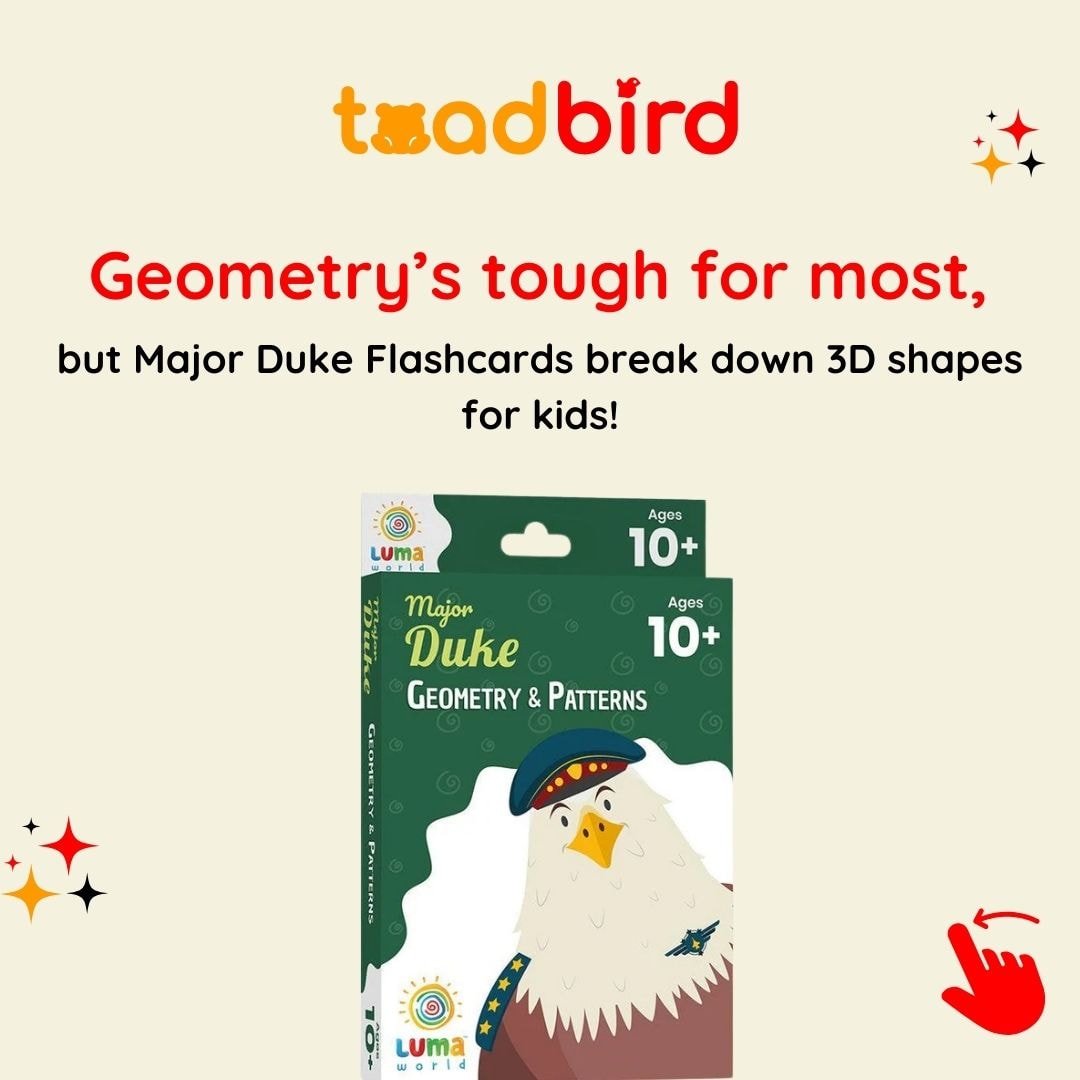
Why These Flashcards Are Perfect for Geometry
- Covers complex topics: Introduces 3D shapes, coordinate planes, and transformations.
- Step-by-step learning: Helps students grasp challenging math concepts without feeling overwhelmed.
- Encourages independent problem-solving: Builds critical thinking skills by guiding students through problems.
- Perfect for aspiring STEM learners: Great for students interested in engineering, architecture, or design.
How to Use STEM Challenge Cards in the Classroom
Including STEM challenge cards into everyday classroom routines can improve math understanding in many ways,
- Whole Class Instruction: Interactively introduce new material with the cards.
- Small Groups: Give groups various problems to solve together for cooperative study.
- Early Finishers: Provide a challenge for pupils to finish as others their work.
Employ challenge cards during downtime to keep pupils interested between indoor recess or centers.
Every group has a materials list, therefore parents and teachers may simply locate all required supplies without added trouble. The hints on the challenge card help guarantee that students remain interested even if they cannot advance.
Extended Learning and STEAM Integration
To enhance STEM learning, many challenge cards incorporate elements of science, technology, engineering, art, and math (STEAM). Activities such as designing pool flotation devices or building pumpkin catapults integrate multiple disciplines, promoting a holistic approach to learning.
Additionally, these resources encourage extended learning by allowing students to apply concepts beyond the classroom through hands-on experiments and real-world exploration.
Conclusion:
STEM challenge & Flash cards provide a dynamic and hands-on approach to making math more engaging for children. By turning abstract concepts into interactive challenges, these cards help build problem-solving skills, critical thinking, and confidence in young learners.
Whether used in whole-class instruction, small groups, or as independent activities, STEM challenge cards transform math into a fun and meaningful experience. From building pumpkin catapults to designing flotation devices, they offer a diverse range of activities that cater to different learning styles and interests.
Incorporating these challenge cards into your teaching toolkit is an effective way to nurture STEM skills while keeping students enthusiastic and motivated about math.
Check out the entire flash card collection from Toadbird and accelerate learning in young children.